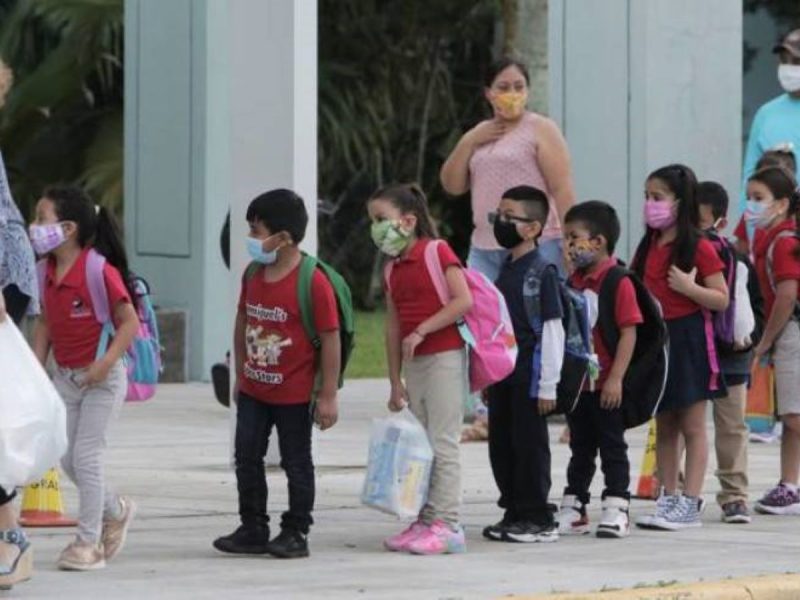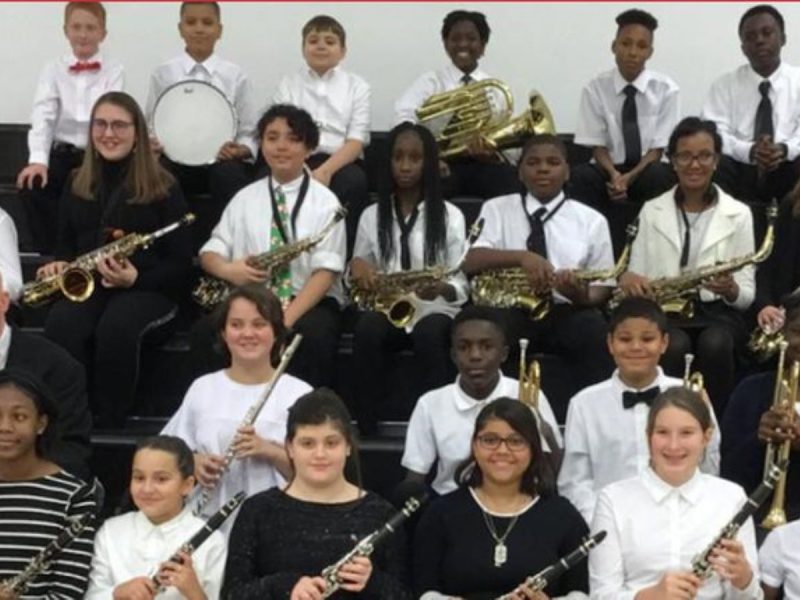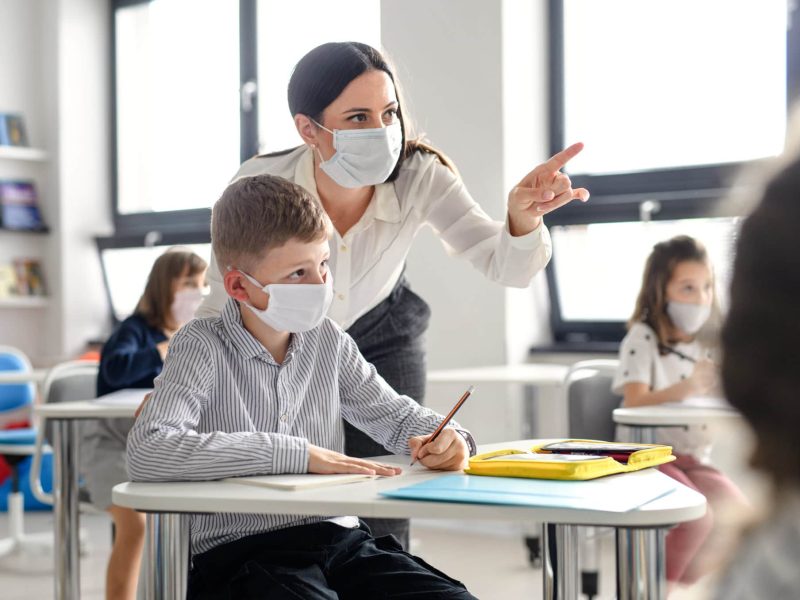Charter schools and their management companies won at least $925 million in federal coronavirus funding, data shows
Washington Post | by Valerie Strauss | July 27, 2020
The Paycheck Protection Program, or PPP, is a $660 billion business loan program established as part of the $2 trillion coronavirus economic stimulus legislation that Congress passed in the spring. PPP was aimed at helping certain small businesses, nonprofit organizations, sole proprietors and others stay in business during the economic downturn caused by the coronavirus pandemic.
The U.S. Small Business Administration administered the program, and recently the SBA and the Treasury Department released some data on what organizations won loans from the program and how much they received. (Some loans can be forgiven if the PPP money is spent on keeping employees on the payroll.)
The release of funding details sparked some controversy about whether some of the organizations that received funds should have gotten them, including public charter schools — which are publicly funded but privately operated — and some elite private schools. (A Washington Post database shows the data.)
Charter schools received emergency stimulus money from Congress from the same fund that traditional public schools did — but some charter schools decided to apply for PPP loans as well, saying that they are underfunded through regular funding formulas and had a right to seek more aid. Other charter schools chose not to apply for loans, saying it would be double-dipping in federal aid funds.
Among those charters that did were some that knew they didn’t actually need the money to maintain financial stability. For example, 2KUTV in Salt Lake City did an investigation into Utah charter schools taking PPP funding and found that they took a total of $7.9 million. It reported on a discussion at the June 25 meeting of the governing board of the Utah Military Academy, a charter with two campuses, in which an unidentified board member explained how the $1.15 million in PPP funding that the school was expecting would be spent.
The conversation, heard on audio tapes, went like this, according to the CBS affiliate:
“So we take this money to pay the salaries, and the money we were going to pay salaries is going to go into our accounts to help flush up our funds,” said the board member.
“Can I ask a question?” a female voice said. “My understanding was that this money is for businesses who, because of the drop in business, were having trouble keeping all their employees. How do we qualify for that? Because our funding wasn’t cut at all.”
She also notes that no employees have been laid off by the school because of the covid-19 pandemic. Two more voices interject, “We’re a business,” and, “We’re a nonprofit.” A third voice is heard saying, “It’s some of that good free government money!”
With that, here is the post about just how much charter schools did get in PPP money, written by Carol Burris, executive director of the Network for Public Education, an alliance of organizations that advocates for the improvement of public education. Burris, a former award-winning principal in New York, has been chronicling the charter school movement and the standardized-test-based accountability movement on this blog for years.
By Carol Burris
On May 13, Washington Post reporter Perry Stein reported that some Washington, D.C., charter schools had been receiving funds from the Small Business Administration’s (SBA) Paycheck Protection Program (PPP), although all of their taxpayer revenue continued to flow. By June 15, the New York Times’s Erica L. Green also wrote a story about how charter schools, some of which had billionaire backers, had been applying for and getting PPP money. Before long, local news agencies picked up on the story, questioning why schools that received public funding were tapping into the SBA program.
Unknown at the time was the national scope of the use of PPP funds by charters. Therefore, the Network for Public Education decided to scour the list of PPP recipients disclosed by the SBA and create lists by state of the charter schools and their management organizations that had received funding.
The amount that we have identified is staggering. More than 1,300 charter schools and their nonprofit or for-profits or management companies secured between $925 million and $2.2 billion through the PPP. We provide a range not from uncertainty but because the SBA chose not to report the exact amounts of the forgivable loans.
Even this range is an underestimate. Excluded from our calculations is the sizable number of PPP loans below $150,000 — which the Trump administration has not disclosed. You can find our state-by-state list of charter schools and charter management organizations, along with each school’s PPP range amounts, on our website here.
Background
The National Alliance for Public Charter Schools informed its members via email in March that it had successfully lobbied for charter schools to receive PPP funds and provided instructions on how such funding could be obtained. The blog that contained the contents of that email has been removed, but you can find it in the Internet archives here. Not only did the charter school alliance encourage its members to apply, but the organization received its own PPP forgivable loan in the range of $350,000 to $1 million.
Because the laws regarding charter transparency vary from state to state, prior to the publication of the SBA list we could only obtain information about PPP loans by reading charter school minutes, if they were posted. In some cases, we were able to listen to available recordings of meetings. From that limited information, a disturbing pattern emerged.
Well-funded charters with ample funding were applying for and receiving large PPP awards. A discussion of the governing board of California’s Summit Public Schools was particularly insightful. Not only did the school’s CEO report that the schools were in good fiscal standing, the only major concern of the board, in addition to public relations, was whether they would find themselves under criminal investigation if they took the funds and it was then discovered that Summit did not need the money.
When the SBA finally released the PPP data, a nonprofit research and policy organization group called In the Public Interest, and the nonprofit grass-roots advocacy group Parents United for Public Schools, analyzed charter school recipients in the state of California. Meanwhile, Carol Burris, Marla Kilfoyle and Darcie Cimarusti of the Network for Public Education concentrated on the other 49 states and Washington, D.C. Professor Gary Miron of Western Michigan University provided a national list of for-profit and nonprofit charter management organizations, which we checked against the PPP database as well. Because some organizations did not list themselves as nonprofits but rather as corporations, and some charter schools have nonprofits with names different from the name of the school, it is likely we missed a sizable number of grantees.
What we found
California has the most charter schools in the nation — approximately 1,300. Even so, its charter sector received a disproportionately large amount of PPP funding, which may be as high as half a -billion dollars.
More than 400 charter organizations received loan money totaling between $240.7 million and $565.6 million. In the Public Interest has created a searchable database of the California charters that received PPP loans, available here. Two-thirds of these charters are affiliated with “CMO’s,” or “charter management organizations,” such as Learn4Life and Magnolia Public Schools, large chains with campuses statewide. Inspire Schools, whose founder and former CEO has recently drawn criticism for receiving more than $1 million in retroactively authorized payroll, took as much as $29.7 million in PPP funding. This home-schooling charter network was expelled last fall from the California Charter Schools Association, an organization that typically unabashedly defends its members.
In Los Angeles County — where the Los Angeles Unified School District has more charter schools than any other school system in the country — according to In the Public Interest, charters received as much as $201 million. San Diego County charters received as much as $91 million.
The New York State charter sector received between $126 million and $293.2 million — even as local businesses were going belly up because of a lack of revenue during the high point of the coronavirus pandemic in that state.
While New York public school districts may have felt the pain of Gov. Andrew M. Cuomo’s (D) decision to not distribute federal Cares Act funding to schools and use it to fill the state’s budget hole instead, 146 of the 327 charter schools had that blow cushioned by PPP. For example, six of the eight New Vision Charter High Schools received PPP funding, which totaled at the high end of the range to $10 million. In addition, the New Visions charter management organization that manages the schools received its own PPP funding in an amount between $2 million and $5 million.
Beside California and New York, two other states’ charter sectors received high-end range PPP funding in excess of $100 million: Florida, at $152.8 million, and Louisiana, at $107.4 million. The charter sectors in three other states received up to $80 million or more: Arizona, $99.4 million; Pennsylvania, $85 million; and Texas, $81.1 million. Again, readers can find state totals along with school names and funding ranges here.
National charter chains cash in
Learn4Life is a charter school chain claiming 80 campuses in California enrolling nearly 40,000 students. It is expanding to North Carolina, South Carolina and Texas. Its schools are often storefronts in malls where over-aged or at-risk students pick up work to independently complete. On-site teachers provide support if needed.
According to In the Public Interest, Learn4Life schools received as much as $51.7 million in PPP funds — more than the total amount received by the entire charter sectors in the majority of states. Last June, a judge ordered the chain to close three of its San Diego County locations after school districts said they were operating illegally within their boundaries. Later that year, a Voice of San Diego investigation revealed that John Helgeson, a Learn4Life executive vice president, was collecting two paychecks paid with public money. In a scheme described as “a classic conflict of interest,” Helgeson owned a for-profit company that loaned money and leased corporate office space to Learn4Life while he worked for the chain.
At a glance, Learn4Life seems too big to apply for a PPP loan. But like Shake Shack and other corporations with multiple locations, Learn4Life’s leaders took advantage of the chain’s structure to apply school by school, while also applying for their central management organization.
Learn4Life was hardly alone. Twenty-one organizations related to the KIPP charter chain have in total received an amount at the high end of the range, $68.7 million, more than the high end of the charter sector in 42 states.
The for-profit charter management organization Academica runs charter schools in seven states. Its home office is located in Florida, where the company manages scores of charter schools down the east coast of the state from Fort Pierce to Homestead. Academica also has a presence in Arizona, California, Nevada, South Carolina, Texas and Utah. Academica Management LLC, Academica West and Academica Virtual Education, which the organization uses to support online schooling, received PPP funding, as did 15 of the schools it manages and supports. High-range amounts for Academica and its schools produce a total of $35.7 million.
Small charter management organizations jumped in as well. Philips Education Partners, located in Newark, New Jersey, got between $150,000 and $350,000. It runs two charter schools. One of those two schools, Philips Academy of Patterson, also received PPP in the same amount — $150,00 to $350,000 — as the charter management organization. Miguel Brito, the CEO of Philips Education Partners, received total compensation in 2017 of $410,205. Meanwhile, the average salary for New Jersey school superintendents in 2017-2018 was $155,631, according to an NJ Advance Media analysis of state data.
Authentic need or money grab?
The board of Palisades Charter High School near Los Angeles voted in June to accept $4.6 million in PPP funding despite admitting that they didn’t have an immediate need for the money. Yet, earlier this month, they voted to lay off five staff members, including a tutoring center coordinator, and reduce the hours of 18 other employees.
Palisades was not alone. In all of the minutes we read, and recordings we listened to, charter school boards reported ample fund balances and justified taking the money because future funding was uncertain. During a meeting of the Utah Military Academy, one board member described taking PPP funds as follows: “So we take this money to pay the salaries, and the money we were going to pay salaries is going to go into our accounts to help flush up our funds.”
However, preparing for possible uncertainties or “flushing up funds” was not the purpose of the program. We are aware of no other sector funded nearly exclusively by the taxpayers that received PPP.
This raises questions about whether charter schools should have been allowed to access PPP money, and whether harm was caused by allowing them to do so.
Charter schools have received the same continuity of funding as district-run neighborhood public schools during the pandemic. Eligible charter schools — those schools with large numbers of low-income students — have also received federal Cares Act funding, as well as other state-based coronavirus relief. While receiving this funding that was intended to support public schools, charter schools are now also receiving funding that was intended for small businesses and nonprofits whose revenue streams were drastically impacted by the pandemic.
Granted, charter schools are not alone among nonprofits in taking funding just because they can. We found 17 nonprofit organizations that support charter schools (or advocated for charters receiving PPP funding) receiving that funding themselves — in total receiving between $6.3 million and $14.8 million. For example, the Thomas B. Fordham Institute, a school reform think tank, is also an authorizer of charter schools in Ohio. It received between $350,000 and $1 million in PPP funding despite its initial endowment of $50 million. In 2018, the organization ended the year with a fund balance of $8 million. Readers can find a list of these charter support organizations and the amounts they received here.
And now to the question of harm. By taking PPP when not needed, systemic inequities increased. The PPP has been widely criticized as being difficult to access for many small businesses, particularly those owned by people of color.
A survey conducted in May of 500 black and Latinx small-business owners found that just 12 percent of those who had applied had received the funds they asked for, with nearly 50 percent anticipating having to permanently close in the next six months. A recent study by the National Community Reinvestment Coalition found “different levels of encouragement to apply for loans, different products offered, and different information provided by bank representatives.”
Certainly, there are other nonprofit and for-profit organizations beyond the charter school world that took coronavirus money just because they could. Although eligible via our nonprofit status, the Network for Public Education did not apply for PPP funds. We encourage other nonprofit organizations that were able to meet payroll without the funding to return those funds, making them available to the small businesses that never received them or that may need a second infusion of cash.
As to the funding supplied to charter schools, we suggest that as states distribute the next round of funding to schools, that allocations to charter schools that received PPP be reduced by the amount they received and be redistributed equitably to all schools, both public and charter.






